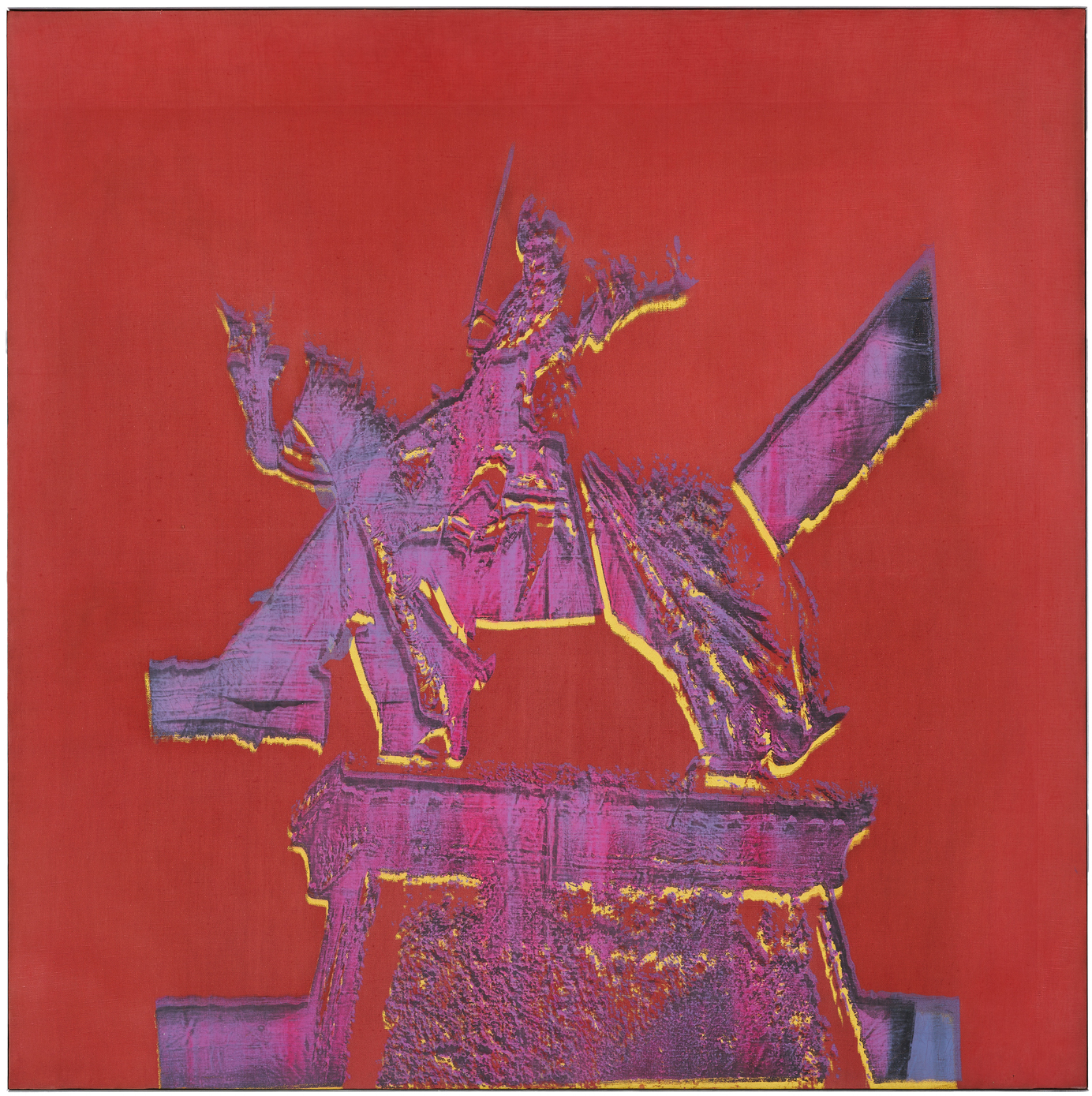
FABIO MAURI
AMORE MIO
30 September – 22 December 2023
Zurich, Limmatsrasse
Organized with Olivier Renaud-Clément in collaboration with Studio Fabio Mauri, ‘Fabio Mauri. Amore Mio’ is the first solo presentation in Switzerland on the seminal Italian artist (1926 – 2009) and sheds light on a period in his work during which he explored visual aspects pertinent to pop art.
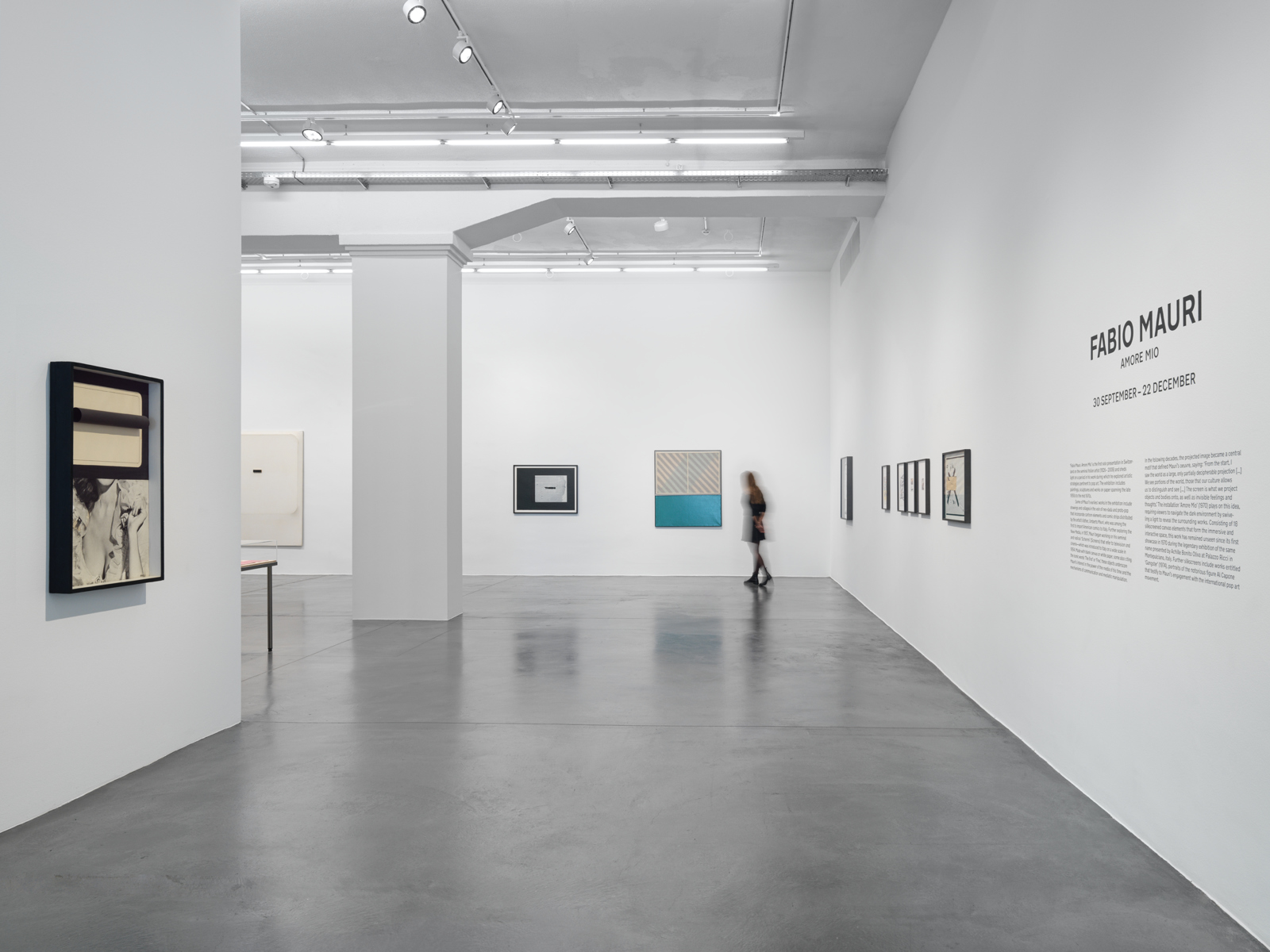
EXPLORE THE EXHIBITION
The exhibition includes paintings, sculptures and works on paper spanning the late 1950s to the mid 1970s, as well as the installation ‘Amore Mio’ (1970), on view for the first time in over 50 years.

‘Fabio Mauri. Amore Mio’ is a testament to the artist’s early engagement with themes that would come to define pop art, before the movement became widespread in Europe after US artist Robert Rauschenberg won the Golden Lion at the Venice Biennale in 1964. The 1964 Biennale marked a pivotal shift: artistic circles in Europe, particularly Italy, saw the arrival of American pop art as a sign of US expansionism, at a time where artists like Tano Festa, Fabio Mauri, Mimmo Rotella and Mario Schifano were already experimenting with similar ideas.
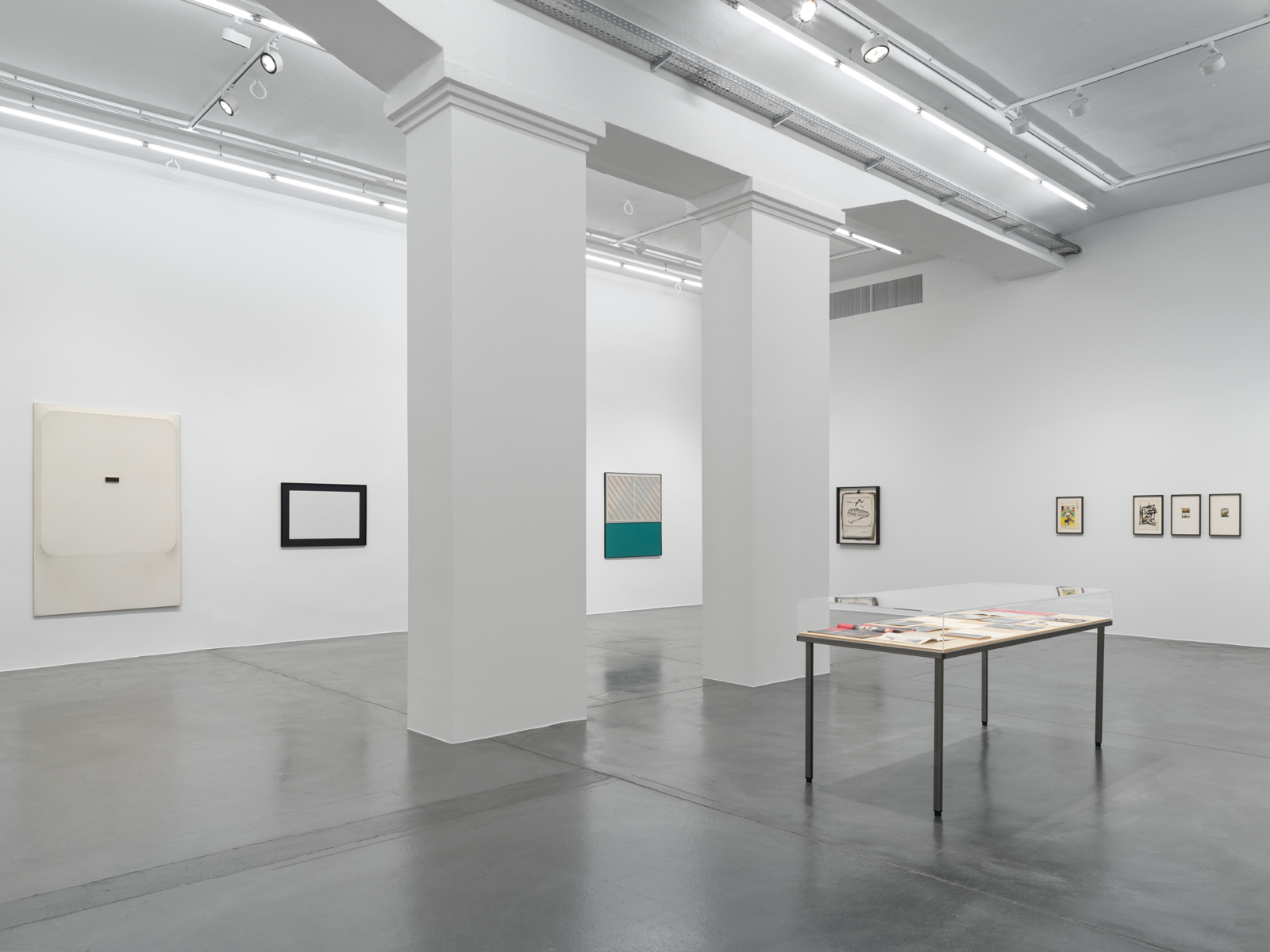
Some of Mauri’s earliest works in the exhibition include drawings and collages in the vein of neo-dada and proto-pop that incorporate cartoon elements and comic strips distributed by the artist’s father, Umberto Mauri, who was among the first to import American comics to Italy. The artist deployed fragments of Lil Abner, Popeye, Flash Gordon and Mad Magazine, as well as comic strips syndicated in Italy.

‘Jiggs and Maggie’ became ‘Arcibaldo e Petronilla’ and a cutting illustrating its two main characters at the cinema, can be seen in ‘Arcibaldo I’ (1960). Extending the scene with expressive mark-making in ‘Arcibaldo II’ (1960), a box drawn in black ink resembles the cinema screen, a symbol of our multimedia-dominated society repeatedly used by Mauri. ‘Arcibaldo III’ (1960) sees Mauri collage the words ‘The End’ as a play on the classic cinematic trope.
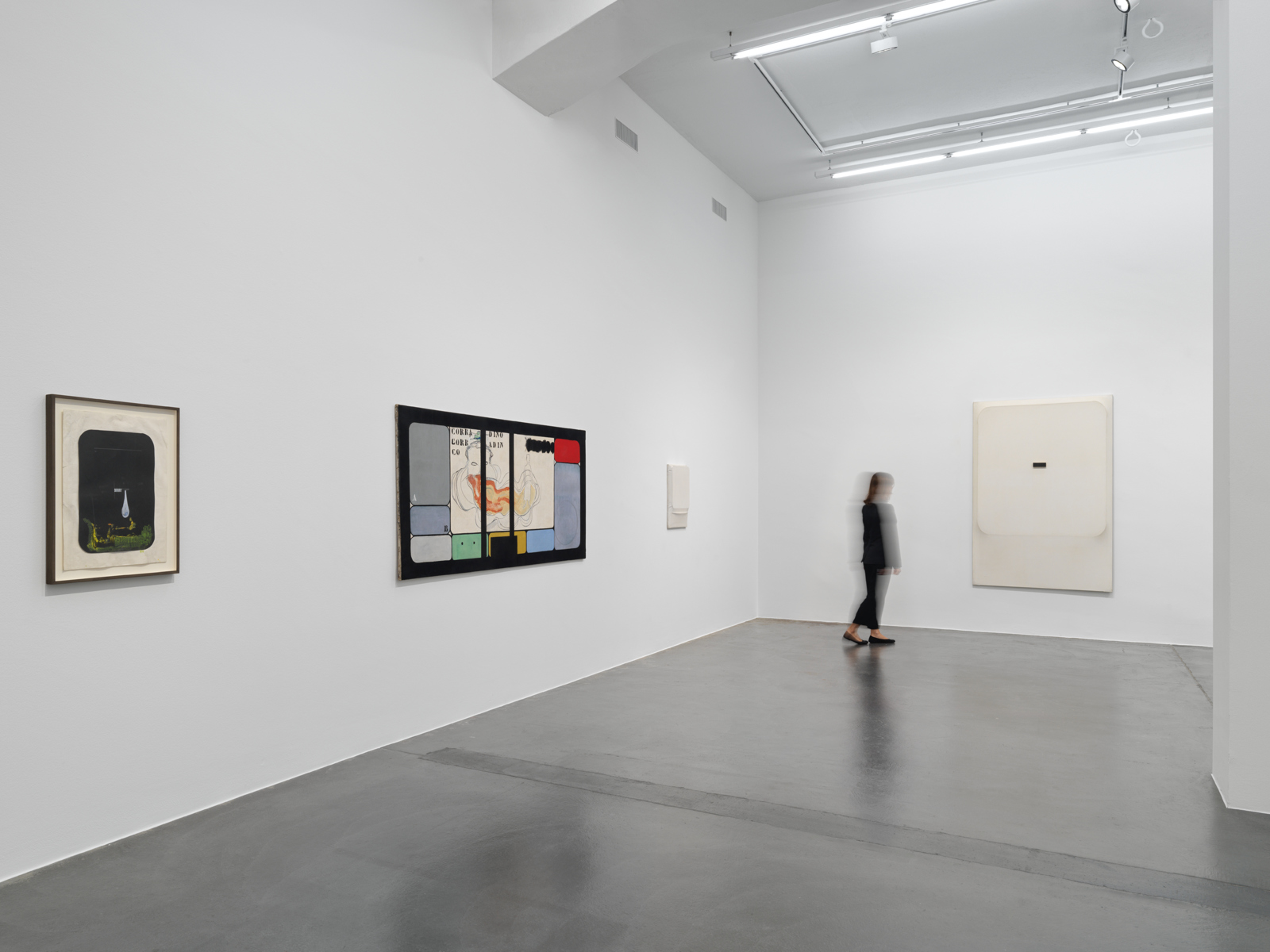
In 1957, Mauri began working on his seminal and radical ‘Schermi’ (Screens) that refer to television and cinema—which was introduced to Italy on a wide scale in 1954. Made with blank canvas or white paper, some also citing the iconic words ‘The End’ or ‘Fine,’ these objects underscore Mauri’s interest in the power of the New Media of his time and the mechanisms of communication and mediatic manipulation.
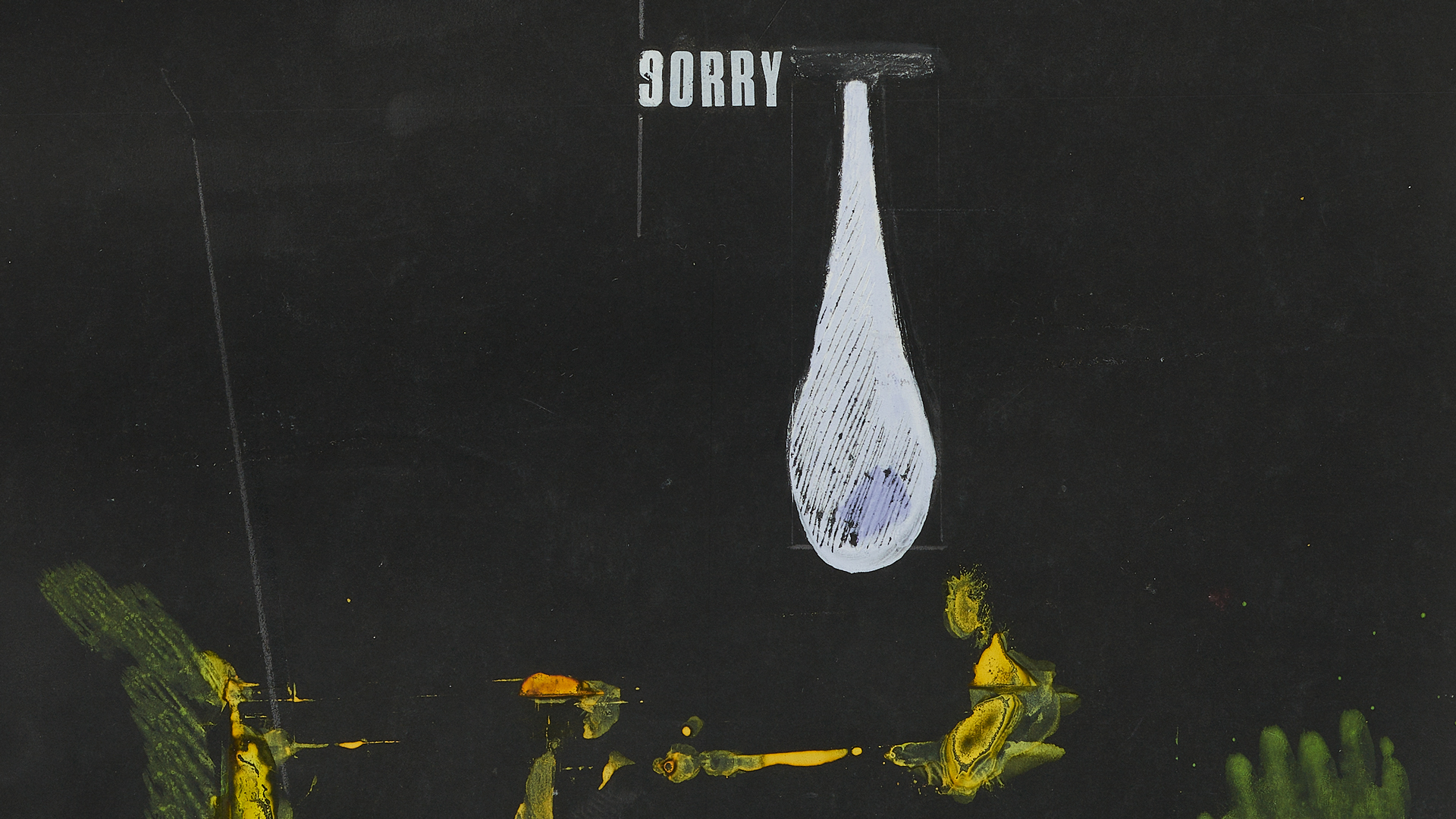
In a radical gesture, Mauri voids his monochromatic screens of any content, narration and ideology, emphasizing that ‘the canvas is no longer. It is exchanged with a distinctively ‘active’ breeding ground for culture and the fermentation of ideas.’ Whilst these works often comprise pure white screens that extend out from the frame, other examples of Schermi appropriated images of celebrities like singer Frank Sinatra or symbols referring to the actress Marilyn Monroe or took the form of drawings on paper, characterized by their flatness or abstract patterns.
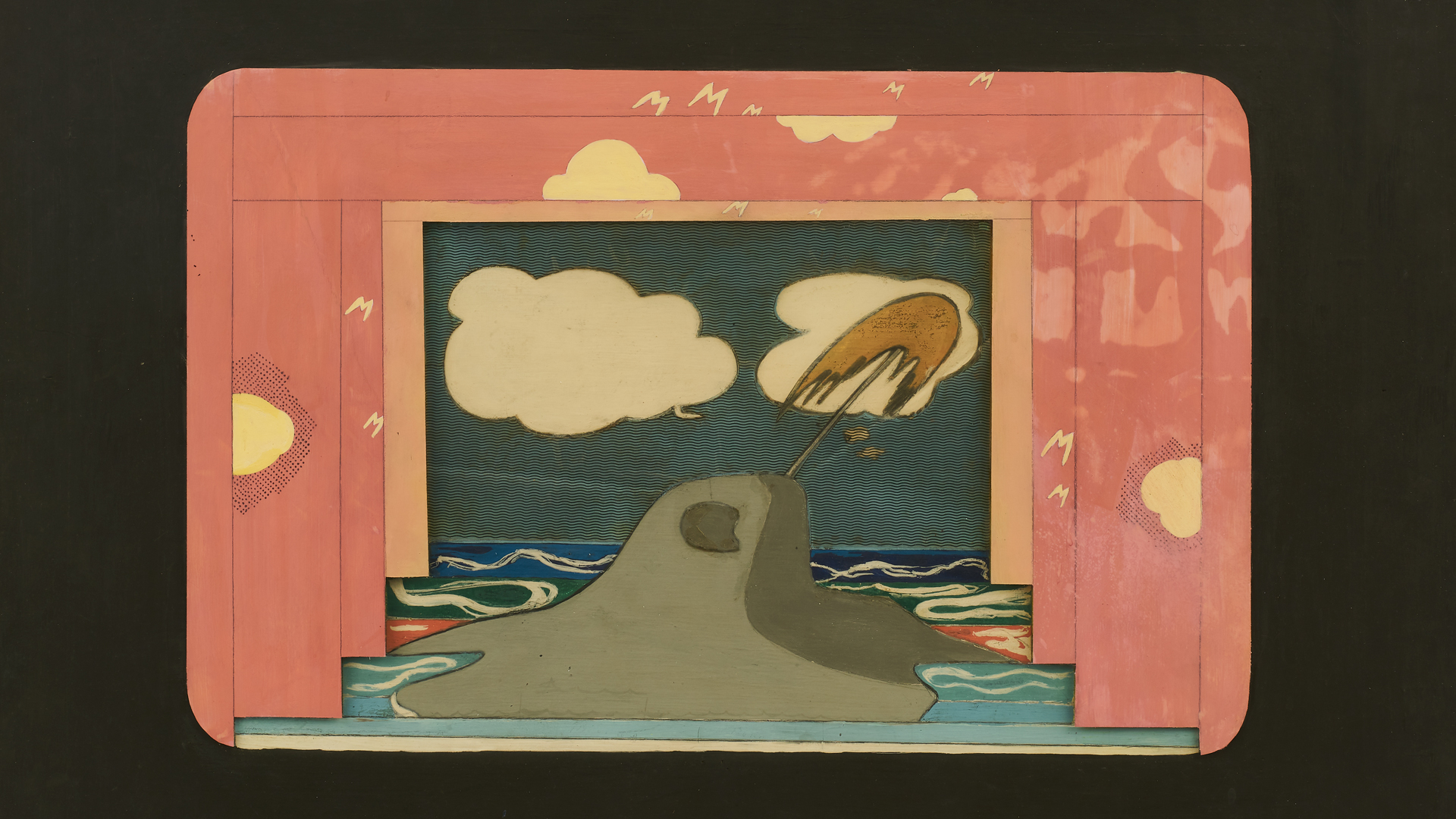
Elevating the comic strip to an art form, ‘L’isola (The Island)’ (1960 – 1966) acts as a maquette for the scenography of Mauri’s theatre play ‘L’Isola,’ written in 1960. The unparalleled set design plays with the flatness of comics, depicting a graphic world composed of contrasting planes stylized with black contouring lines, all framed by a dark edge evocative of television screens. ‘L’Isola’ is an early prime example of Mauri’s engagement with the performative arts and his unrelenting exploration of the real.
‘From the start, I saw the world as a large, only partially decipherable projection [...] We see portions of the world, those that our culture allows us to distinguish and see [...] The screen is what we project objects and bodies onto, as well as invisible feelings and thoughts.’ —Fabio Mauri
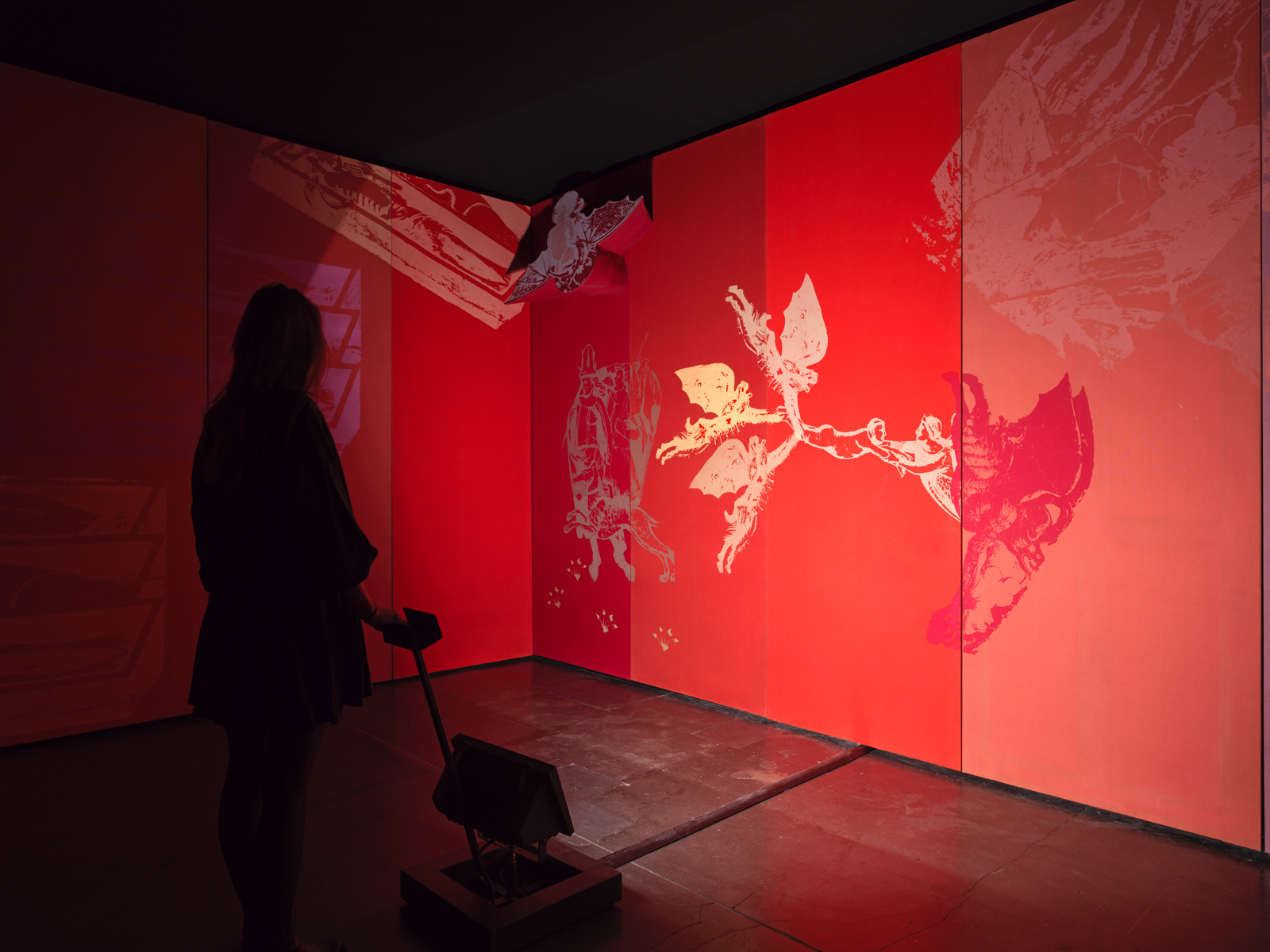
The projected image became a central motif that defined Mauri’s oeuvre. The installation ‘Amore Mio’ (1970) plays on this idea, requiring viewers to navigate the dark environment by swiveling a fixed light to reveal the surrounding works. Consisting of 18 silkscreened canvas elements that form the immersive and interactive space, this work has remained unseen since its first showcase in 1970 during the legendary exhibition of the same name presented by Achille Bonito Oliva at Palazzo Ricci in Montepulciano, Italy. Further silkscreens include works entitled ‘Gangster’ (1974), portraits of the notorious figure Al Capone that testify to Mauri’s engagement with the international pop art movement.

Also on view is Mauri’s installation ‘Intellettuale. ll Vangelo secondo Matteo di/su Pier Paolo Pasolini’ (1975). Originally conceived with the participation of Pier Paolo Pasolini as a living screen for his film ‘The Gospel According to St. Matthew,’ the film is now projected upon his shirt. Depicting a beam of light as a three-dimensional solid, ‘Cinema a luce solida (Cinema of solid light)’ (1968) suggests that images projected onto a screen are often constructed—particularly in pointed and political ways—and that their ideas have weight.

Exploring the idea of the screen as a filter through which we perceive reality, Mauri said, ‘the screen had become a sort of witness to history, an opaque mirror, but one that captured the projections of the world and contained them.’ Mauri proposes through his works a questioning of the ‘real’ by commenting on the proliferation of screens in modern society—an observation that holds even more relevance today.

The exhibition precedes the online catalogue raisonné of Mauri’s work to be published at the end of the year, as well as a solo presentation of works on paper at Castello di Rivoli, Italy, opening December 2023. Mauri’s iconic installation ‘Luna’ (1968) will also be part of a major group exhibition ‘Immersion. The Origins: 1949-1969’ at Musée cantonal des Beaux-Arts Lausanne from 27 October 2023.

On view at Zurich, Limmatstrasse
‘Fabio Mauri. Amore Mio’ is on view now through 22 December 2023 at Hauser & Wirth Zurich, Limmatstrasse. Please visit our location page to plan your visit.
About the Artist

Fabio Mauri
Post-war Italian artist Fabio Mauri’s practice encompasses performance, film, installation, found-object sculpture, mixed media works and theoretical writings to question readings of history and the associated power of language and ideology associated with the Second World War and the Holocaust. Sobering, direct, and poetically reflective, Mauri’s art addresses themes of communication and manipulation, and brings light to the ‘political dimension of the image,’ as it is projected and proliferated throughout contemporary society.Born in Rome in 1926, Mauri’s youth was marked by the events of war and Fascism—traumas and horrors that would profoundly impact and influence his life and work. Raised among writers and painters, Mauri befriended intellectuals in Italy’s new avant-garde, among them the novelist Italo Calvino, philosopher and semiotician Umberto Eco, film director and aficionado Pier Paolo Pasolini, visual artist Jannis Kounellis, art historian Maurizio Calvesi and the writer Edoardo Sanguineti. ‘I patiently recompose,’ the artist commented, ‘with my own hands, the experience of the shameful. I explore its mental possibilities… I behave as if that reality (that history) had not had its final condemnation, but were still adding further data right up to our time today.’
The screen as a symbol emerges as early as 1957 and remains essential to the articulation of his work. Whether cinema, television or computer it allows for an exploration of meaning, images and codes. Through this Mauri proposes to his audience an examination, a critique and an experience of the ‘real.’
Mauri worked for the family company, the publishing house Bompiani, from 1957 to 1975 as director of the Milan and Rome headquarters. Along with Umberto Eco and Edoardo Sanguineti, he founded the magazine Quindici (1967) and the magazine for arts criticism, La citta di Riga in 1976. Such as his oeuvre, Mauri is undefinable practicing as artist, playwright, publisher, critic and teacher throughout his career. He never belonged to any specific artistic movement but kept a close proximity to various artists and discourses. Mauri has exhibited his work internationally in prominent institutions.
Inquire about available works by Fabio Mauri
Current Exhibitions
1 / 12












